It has been said all natural-dyed colors go together. What better way to test the theory than a modified crochet version of the Hue Shift Afghan???
As of October 16, 2013, Ravelry listed 460 Hue Shift Afghan projects. Even though all those knitters used the same pattern and most the same kit(s), some of the color combinations are unique and inspiring. Yet not a single project is crocheted.
When the Hue Shift Afghan pattern was released one year ago, several of my crochet buddies asked if I thought it might be possible to convert this knitted masterpiece into crochet. For nearly a year now, I've been pointing them to crocheted mitered square patterns, many of which were potholder patterns, which don't include instructions for joining motifs. Most crochet mitered square patterns also start with a ring of three stitches with rows that get bigger as they progress. Joining mitered squares in a Hue Shift-manner is easier if the squares are worked in the opposite direction, with rows becoming shorter as they progress.
I, too, have been mesmerized by the Hue Shift Afghan, but I wanted mine to be different. Seeing so many afghans virtually the same reminded me of my senior prom, when I designed my own dress with white and blue rose fabric I found in a clearance bin.
I thought I bought ALL the remnants. But apparently a classmate found a few more; either that, or she bought her fabric BEFORE it went on clearance. Both of us showed up for prom wearing the very same fabric. I was so glad I made up my own pattern! No one's dress was exactly like mine.
My classmate's dress was gorgeous (and made with the very same popular pattern many other classmates were wearing, too, albeit different fabrics), but it made the two of us look as if we were twins whose mother dressed us just a tad differently so she could tell us apart. People asked all night if we were sisters. We'd attended the same schools together for six years, and we'd never been mistaken for sisters before prom!
Not that she would have been a bad sister. I just didn't want to be a twin at prom. Funny how I love when my cycling jersey matches my husband's cycling jersey now...
I've been natural dyeing cotton yarn all summer long. My goal was 20 colors. I got 26. (Yippee!!!) One day, I realized I had adequate colors to make my own version of the Hue Shift Afghan. I could crochet it, and I could work up a join tutorial.
I started my project during our annual road trip to photograph autumn leaves (and gather fallen leaves for yet more natural-dyed yarn)...
I did not have access to the Hue Shift Afghan pattern or even a photo (no cell phone signal out in the boondocks), so I winged it. As a result, my crochet conversion doesn't really look like the traditional Hue Shift Afghan, which is kind of nice, being as that was my goal. I do love this afghan, and I think the visual appeal is awesome, but there are things I would do differently if I could do this over again.
I would like to make a more traditional Hue Shift Afghan one day, even if I do put my own spin on it. I might even knit it... Nevertheless, these are some of the things I would do differently if I had all this hand-dyed yarn fresh and new again (maybe next summer!!!):
1. Dye more than 100 yards of yarn for each color. Really stinks to run out and not be able to perfectly duplicate the color. I ran out of every color I used.
2. Begin each mitered square with the horizontal row color instead of the diagonal row color. (I figured that out on the second row of squares, but I didn't have enough of the darkest yarn color to redo everything I'd just done.)
3. Work the afghan in four quarters instead of one whole and angle the corners like the original Hue Shift Afghan, although I am considering making my next Hue Shift sort of off-center. Because I think that would add to the visual effect.
4. When I selected colors for this project, I still had not achieved red or orange. I wish I had waited another month or so to begin, because now I have enough shades of madder red to crochet my own version of The Wave. Hey, come to think of it... um, ideas percolate...
All that said, this tutorial is not intended to be a free version of the Hue Shift Afghan pattern. The purpose of this tutorial is to share a crochet joining method, as well as color twisting at the end of every other row so as not to have a plethora of knots and ends to weave in at the end of the project. This is a crochet conversion companion to the Hue Shift pattern. I would encourage all who love the Hue Shift Afghan to figure out a way to make it their own. My basic mitered square pattern below does not include my own modification, although experienced crocheters will be able to reverse engineer what I've done. Instead of duplicating what I've done, I would encourage you to think of a way to change the pattern up a bit and make it unique. I think you'll be glad you did.
Hue shift color charts and diagrams are located here, here, here, here and here. Rectangular diagrams are located here, here and here.
I finished my prototype Summer of Color in the car the week after Thanksgiving, just hours before we reached the Grand Canyon. (It was brutally frigid and windy that day, so the extra warmth provided by my Summer of Color afghan was a real treat.) What a stunning backdrop for a rainbow of all-looped-up natural hand-dyed yarn! (And The Lizard said, "Don't you let that blow away!" He likes my Summer of Color, too!)
I plan to edge the entire afghan with three rows of single crochet, but I have to dye more yarn first, and all my solar dye pots currently are frozen. The nice thing about this forced waiting period is I get to audition different colors until I decide what color I'd like the edging to be, an antique-like tea stain hue leading my options as I write this post, although indigo or black might provide further visual punch.
You may do whatever you'd like with mitered squares you make from this pattern and/or tutorial, but you may not sell or republish the pattern and/or tutorial. Thanks, and enjoy!
Finished Mitered Square Size: 4.5 inches from side to side
Materials: Approximately 150 yards each of worsted weight cotton (or desired fiber) in 10 colors; approximately 400 yards of worsted weight cotton in 1 color for optional edging; size H crochet hook
Summer of Color Afghan Mitered Square, Color Change and Motif Joining Tutorial
NOTE: I've provided instructions for a 4.5-inch mitered square. This pattern may be adapted to make the squares bigger or smaller by adding or subtracting starting chains and compensating appropriately for additional/fewer rows. To preserve an uneven number of bands in a striped square, subtract or add a multiple of 8 chains (i.e., chain 22 with 9 single crochet to center decrease for a smaller square or chain 38 with 17 single crochet to center decrease for a larger square, with appropriate adjustments to the amount of yarn required to finish a project). Joining squares are worked with the same number of evenly spaced single crochet stitches as the initial square. For the tutorial photos included here, I chained 46 and worked 21 single crochet to the center decrease, making the resulting row of mitered squares into a cowl.
TIP: I weave in all ends as I work by crocheting over them so I have only one end to weave in when I finish the entire project.
Solid-Colored Mitered Square
With Color A, ch 30.
Row 1: (Right side facing you.) 1 sc in 2nd ch from hook and in each of next 12 ch; yo and bring up loop through each of next 3 ch, yo and draw through all 4 loops on hook (corner decrease made); 1 in each of next 13 ch. Ch 1; turn.
Row 2: 1 sc in next sc and in each of next 11 sc; yo and bring up loop through each of next 3 sc, yo and draw through all 4 loops on hook (corner decrease made); 1 sc in each of next 12 sc. Ch 1; turn.
Row 3: (Right side facing you. Mark right side of square with safety pin if desired.) 1 sc in next sc and in each of next 10 sc; cd (corner decrease) across next 3 sc; 1 sc in each of next 11 sc. Ch 1; turn.
Row 4: 1 sc in next sc and in each of next 9 sc; cd across next 3 sc; 1 sc in each of next 10 sc. Ch 1; turn.
Row 5: 1 sc in next sc and in each of next 8 sc; cd across next 3 sc; 1 sc in each of next 9 sc. Ch 1; turn.
Row 6: 1 sc in next sc and in each of next 7 sc; cd across next 3 sc; 1 sc in each of next 8 sc. Ch 1; turn.
If you're not reading this pattern on Snowcatcher, you're not reading the designer's blog. Please go here to see the original.
Row 7: 1 sc in next sc and in each of next 6 sc; cd across next 3 sc; 1 sc in each of next 7 sc. Ch 1; turn.
Row 8: 1 sc in next sc and in each of next 5 sc; cd across next 3 sc; 1 sc in each of next 6 sc. Ch 1; turn.
Row 9: 1 sc in next sc and in each of next 4 sc; cd across next 3 sc; 1 sc in each of next 5 sc. Ch 1; turn.
Row 10: 1 sc in next sc and in each of next 3 sc; cd across next 3 sc; 1 sc in each of next 4 sc. Ch 1; turn.
Row 11: 1 sc in next sc and in each of next 2 sc; cd across next 3 sc; 1 sc in each of next 3 sc. Ch 1; turn.
Row 12: 1 sc in each of next 2 sc; cd across next 3 sc; 1 sc in each of next 2 sc. Ch 1; turn.
Row 13: 1 sc in next sc; cd across next 3 sc; 1 sc next sc. Ch 1; turn.
Row 14: 1 cd across next 3 sc; bind off. Weave in ends or crochet over ends when working and joining additional squares.
Striped Mitered Square Joined on Right Side
Repeat this square 9 times or for desired length of afghan (or half of desired length of afghan if working in quadrants.)
Beginning with Color A, ch 16.
Row 1: 1 sc in 2nd ch from hook and in each of next 12 ch; yo and bring up loop through each of next 2 ch; holding 1st square right side up, facing you, yo and bring up loop through edge sc of Row 1, yo and draw through all 4 loops on hook (corner decrease made); 13 sc evenly spaced across row edge and not chain edge of 1st square, making sure to catch at least 2 strands in each join. Ch 1; turn.
Row 2: 1 sc in next sc and in each of next 11 sc; yo and bring up loop through each of next 3 sc, yo and draw through all 4 loops on hook (corner decrease made); 1 sc in each of next 11 sc; yo and bring up loop in final sc, join Color B but do not cut Color A, yo with Color B and draw through both loops on hook. Ch 1; turn.
Crocheting Over Loose End of Color B as I Go
Row 3: Continuing to work with Color B (and crocheting over loose end of Color B), 1 sc in next sc and in each of next 10 sc; cd (corner decrease) across next 3 sc; 1 sc in each of next 11 sc. Ch 1; turn.
Row 4: 1 sc in next sc and in each of next 9 sc; cd across next 3 sc; 1 sc in each of next 9 sc, yo and bring up loop in final sc, twist Color A and Color B 1 time; yo with Color A and draw through both loops on hook. Ch 1, catching Color B in the chain; turn. Repeat this color change method each time color is changed to carry the color not being used up to the next color change.
Row 5: Continuing to work with Color A, 1 sc in next sc and in each of next 8 sc; cd across next 3 sc; 1 sc in each of next 9 sc. Ch 1; turn.
Row 6: 1 sc in next sc and in each of next 7 sc; cd across next 3 sc; 1 sc in each of next 7 sc, yo and bring up loop in final sc, twist Color A and Color B 1 time; yo with Color B and draw through both loops on hook. Ch 1; turn.
Row 7: With Color B, 1 sc in next sc and in each of next 6 sc; cd across next 3 sc; 1 sc in each of next 7 sc. Ch 1; turn.
Row 8: 1 sc in next sc and in each of next 5 sc; cd across next 3 sc; 1 sc in each of next 5 sc, yo and bring up loop in final sc, twist Color A and Color B 1 time; yo with Color A and draw through both loops on hook. Ch 1; turn.
Row 9: With Color A, 1 sc in next sc and in each of next 4 sc; cd across next 3 sc; 1 sc in each of next 5 sc. Ch 1; turn.
Row 10: 1 sc in next sc and in each of next 3 sc; cd across next 3 sc; 1 sc in each of next 3 sc, yo and bring up loop in final sc, twist Color A and Color B 1 time; yo with Color B and draw through both loops on hook. Ch 1; turn.
Row 11: With Color B, 1 sc in next sc and in each of next 2 sc; cd across next 3 sc; 1 sc in each of next 3 sc. Ch 1; turn.
If you're not reading this pattern on Snowcatcher, you're not reading the designer's blog. Please go here to see the original.
Row 12: 1 sc in each of next 2 sc; cd across next 3 sc; 1 sc in next sc; yo and bring up loop in final sc, twist Color A and Color B 1 time; yo with Color A and draw through both loops on hook; bind off Color B. Ch 1; turn.
Row 13: Crocheting over loose end of Color B, 1 sc in next sc; cd across next 3 sc; 1 sc next sc. Ch 1; turn.
Row 14: 1 cd across next 3 sc; bind off. Weave in ends or crochet over ends when working and joining additional squares.
Striped Mitered Square Joined on Left Side
This square is joined to the Left Side of the 1st square.
Row 1: Beginning with Color A and holding 1st square right side up, facing you, 1 sc in same sc of 1st Row of 1st square as final sc of 1st Row of second square; working along row end edge and not chain edge of first square, work 12 sc evenly spaced along edge of first square and leaving room for 2 more sc at end of row; draw up loop through 1st of 2 spaces, yo and draw up loop through 2nd sp, yo and bring through 2 loops on hook (2-loop connecting ch made and 3 loops remain on hook), yo and draw through 1 loop on hook (faux sc made), yo and draw up loop through connecting ch, yo and draw through 2 loops on hook (2-loop connecting ch made), yo and draw through all 4 loops on hook (corner decrease made); * yo and bring up loop through 2-loop connecting ch, yo and bring through 2 loops on hook, yo and bring through 2 loops on hook (foundation dc made); repeat from * 11 times for a total of 13 foundation dc (that look like 13 sc in an odd-looking ch). Ch 1; turn.
NOTE: I've used foundation dc instead of foundation sc because the 2-loop connecting chain provides a stronger foundation ch for connecting subsequent motifs. Making sure to catch 2 strands instead of 1 when connecting any motifs prevents gaping holes that may form under tension.
Row 2: 1 sc in next sc and in each of next 11 sc; yo and bring up loop through each of next 3 sc, yo and draw through all 4 loops on hook (corner decrease made); 1 sc in each of next 11 sc; yo and bring up loop in final sc, join Color B but do not cut Color A, yo with Color B and draw through both loops on hook. Ch 1; turn.
Row 3: With Color B, 1 sc in next sc and in each of next 10 sc; cd (corner decrease) across next 3 sc; 1 sc in each of next 11 sc. Ch 1; turn.
Row 4: 1 sc in next sc and in each of next 9 sc; cd across next 3 sc; 1 sc in each of next 9 sc, yo and bring up loop in final sc, twist Color A and Color B 1 time; yo with Color A and draw through both loops on hook. Ch 1; turn.
Row 5: With Color A, 1 sc in next sc and in each of next 8 sc; cd across next 3 sc; 1 sc in each of next 9 sc. Ch 1; turn.
Row 6: 1 sc in next sc and in each of next 7 sc; cd across next 3 sc; 1 sc in each of next 7 sc, yo and bring up loop in final sc, twist Color A and Color B 1 time; yo with Color B and draw through both loops on hook. Ch 1; turn.
Row 7: With Color B, 1 sc in next sc and in each of next 6 sc; cd across next 3 sc; 1 sc in each of next 7 sc. Ch 1; turn.
Row 8: 1 sc in next sc and in each of next 5 sc; cd across next 3 sc; 1 sc in each of next 5 sc, yo and bring up loop in final sc, twist Color A and Color B 1 time; yo with Color A and draw through both loops on hook. Ch 1; turn.
Row 9: With Color A, 1 sc in next sc and in each of next 4 sc; cd across next 3 sc; 1 sc in each of next 5 sc. Ch 1; turn.
Row 10: 1 sc in next sc and in each of next 3 sc; cd across next 3 sc; 1 sc in each of next 3 sc, yo and bring up loop in final sc, twist Color A and Color B 1 time; yo with Color B and draw through both loops on hook. Ch 1; turn.
Row 11: With Color B, 1 sc in next sc and in each of next 2 sc; cd across next 3 sc; 1 sc in each of next 3 sc. Ch 1; turn.
If you're not reading this pattern on Snowcatcher, you're not reading the designer's blog. Please go here to see the original.
Row 12: 1 sc in each of next 2 sc; cd across next 3 sc; 1 sc in next sc; yo and bring up loop in final sc, twist Color A and Color B 1 time; yo with Color A and draw through both loops on hook; bind off Color B. Ch 1; turn.
Row 13: With Color A and crocheting over loose end of Color B, 1 sc in next sc; cd across next 3 sc; 1 sc next sc. Ch 1; turn.
Row 14: 1 cd across next 3 sc; bind off. Weave in ends or crochet over ends when working and joining additional squares.
Solid Mitered Square Joined at 3-Square Joint
If you've worked just 3 squares, you now have a V-shaped square assembly. If you've made more than 3 squares, you now have an L-shaped square assembly. Each of the remaining squares in this row of squares will be joined on 2 sides of the existing fabric and on the tip of the 3rd square. Each of the remaining rows of squares will be worked the same as this row of squares. One-color solid squares run in a diagonal row even with the 1st square. For the 2nd row of squares, the 2nd square is solid color. For the 3rd row of squares, the solid square is the 3rd square, and for the 4th row of squares, the solid square is the 4th square, etc.
Row 1: Beginning with Color B and holding the V-squares right side up, facing you, 1 sc in final cd of previous square; working along row end edge and not chain edge of square, work 12 sc evenly spaced along edge of first square, leaving room for 1 more sc at end of row; yo and draw up loop in space left for last sc, yo and draw up loop through dc of diagonal square, yo and draw up loop through next sc of next square, yo and draw through all 4 loops on hook; 13 sc evenly spaced along edge of same square to end of side. Ch 1; turn.
Row 2: 1 sc in next sc and in each of next 11 sc; yo and bring up loop through each of next 3 sc, yo and draw through all 4 loops on hook (corner decrease made); 1 sc in each of next 12 sc. Ch 1; turn.
Row 3: 1 sc in next sc and in each of next 10 sc; cd (corner decrease) across next 3 sc; 1 sc in each of next 11 sc. Ch 1; turn.
Row 4: 1 sc in next sc and in each of next 9 sc; cd across next 3 sc; 1 sc in each of next 10 sc. Ch 1; turn.
Row 5: 1 sc in next sc and in each of next 8 sc; cd across next 3 sc; 1 sc in each of next 9 sc. Ch 1; turn.
Row 6: 1 sc in next sc and in each of next 7 sc; cd across next 3 sc; 1 sc in each of next 8 sc. Ch 1; turn.
Row 7: 1 sc in next sc and in each of next 6 sc; cd across next 3 sc; 1 sc in each of next 7 sc. Ch 1; turn.
Row 8: 1 sc in next sc and in each of next 5 sc; cd across next 3 sc; 1 sc in each of next 6 sc. Ch 1; turn.
Row 9: 1 sc in next sc and in each of next 4 sc; cd across next 3 sc; 1 sc in each of next 5 sc. Ch 1; turn.
Row 10: 1 sc in next sc and in each of next 3 sc; cd across next 3 sc; 1 sc in each of next 4 sc. Ch 1; turn.
Row 11: 1 sc in next sc and in each of next 2 sc; cd across next 3 sc; 1 sc in each of next 3 sc. Ch 1; turn.
Row 12: 1 sc in each of next 2 sc; cd across next 3 sc; 1 sc in each of next 2 sc. Ch 1; turn.
If you're not reading this pattern on Snowcatcher, you're not reading the designer's blog. Please go here to see the original.
Row 13: 1 sc in next sc; cd across next 3 sc; 1 sc next sc. Ch 1; turn.
Row 14: 1 cd across next 3 sc; bind off. Weave in ends or crochet over ends when working and joining additional squares.
Striped Mitered Square Joined at 3-Square Joint
Row 1: Beginning with Color D and holding the V-squares right side up, facing you, 1 sc in final cd of previous square; working along row end edge and not chain edge of square, work 12 sc evenly spaced along edge of first square, leaving room for 1 more sc at end of row; yo and draw up loop in space left for last sc, yo and draw up loop through dc of diagonal square, yo and draw up loop through next sc of next square, yo and draw through all 4 loops on hook; 13 sc evenly spaced along edge of same square to end of side. Ch 1; turn.
Row 2: 1 sc in next sc and in each of next 11 sc; yo and bring up loop through each of next 3 sc, yo and draw through all 4 loops on hook (corner decrease made); 1 sc in each of next 11 sc; yo and bring up loop in final sc, join Color B but do not cut Color D, yo with Color B and draw through both loops on hook. Ch 1; turn.
Row 3: With Color B, 1 sc in next sc and in each of next 10 sc; cd (corner decrease) across next 3 sc; 1 sc in each of next 11 sc. Ch 1; turn.
Row 4: 1 sc in next sc and in each of next 9 sc; cd across next 3 sc; 1 sc in each of next 9 sc, yo and bring up loop in final sc, twist Color D and Color B 1 time; yo with Color D and draw through both loops on hook. Ch 1; turn.
Row 5: With Color D, 1 sc in next sc and in each of next 8 sc; cd across next 3 sc; 1 sc in each of next 9 sc. Ch 1; turn.
Row 6: 1 sc in next sc and in each of next 7 sc; cd across next 3 sc; 1 sc in each of next 7 sc, yo and bring up loop in final sc, twist Color D and Color B 1 time; yo with Color B and draw through both loops on hook. Ch 1; turn.
Row 7: With Color B, 1 sc in next sc and in each of next 6 sc; cd across next 3 sc; 1 sc in each of next 7 sc. Ch 1; turn.
Row 8: 1 sc in next sc and in each of next 5 sc; cd across next 3 sc; 1 sc in each of next 5 sc, yo and bring up loop in final sc, twist Color D and Color B 1 time; yo with Color D and draw through both loops on hook. Ch 1; turn.
Row 9: With Color D, 1 sc in next sc and in each of next 4 sc; cd across next 3 sc; 1 sc in each of next 5 sc. Ch 1; turn.
Row 10: 1 sc in next sc and in each of next 3 sc; cd across next 3 sc; 1 sc in each of next 3 sc, yo and bring up loop in final sc, twist Color D and Color B 1 time; yo with Color B and draw through both loops on hook. Ch 1; turn.
Row 11: With Color B, 1 sc in next sc and in each of next 2 sc; cd across next 3 sc; 1 sc in each of next 3 sc. Ch 1; turn.
If you're not reading this pattern on Snowcatcher, you're not reading the designer's blog. Please go here to see the original.
Row 12: 1 sc in each of next 2 sc; cd across next 3 sc; 1 sc in next sc; yo and bring up loop in final sc, twist Color D and Color B 1 time; yo with Color D and draw through both loops on hook; bind off Color B. Ch 1; turn.
Row 13: With Color D and crocheting over loose end of Color B, 1 sc in next sc; cd across next 3 sc; 1 sc next sc. Ch 1; turn.
Row 14: 1 cd across next 3 sc; bind off. Weave in ends or crochet over ends when working and joining additional squares.
Finish: If working in quadrants, sew or crochet four parts together as directed in the Hue Shift pattern. An optional edging may be worked all the way around the entire afghan if desired. My edging will be three rows of single crochet, with three single crochet on each corner, and turning at the end of each of the three rounds.
This project does not necessarily need to be blocked, but it will have a more professional appearance if blocked. To block, pin and shape on a solid surface that can tolerate dampness (and potential color bleed). For large projects such as afghans and shawls, I use my guest bed with towels beneath the project (and make sure to remove ALL pins when I'm done so overnight guests don't experience a prickly night). Spray lightly with a fine mist and allow to thoroughly dry before removing.







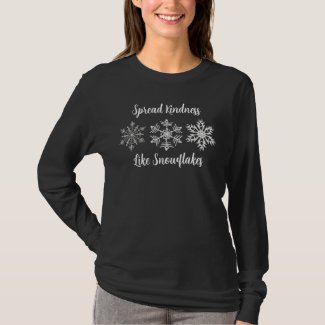
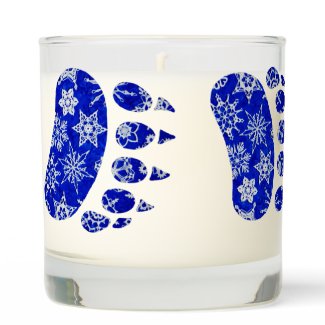
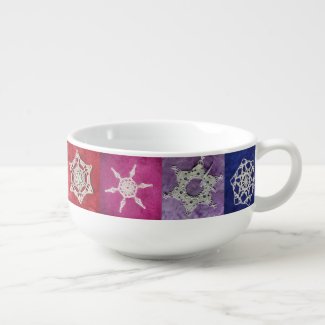

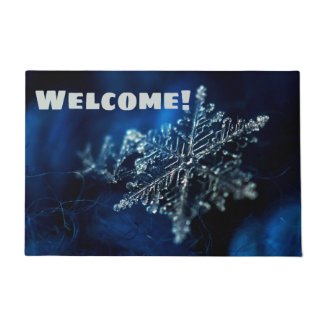

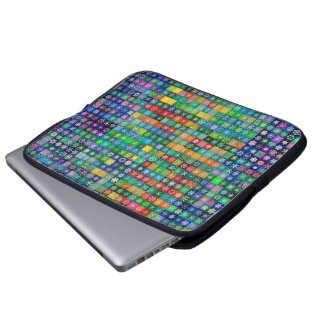
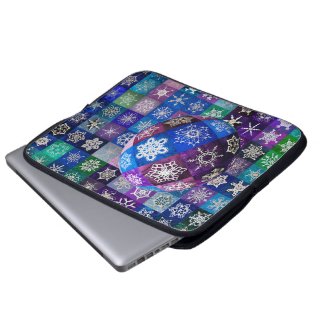
















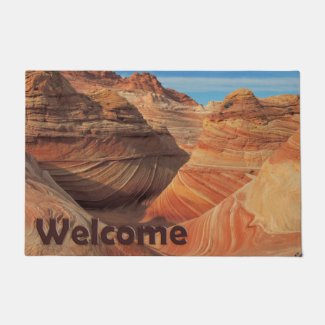
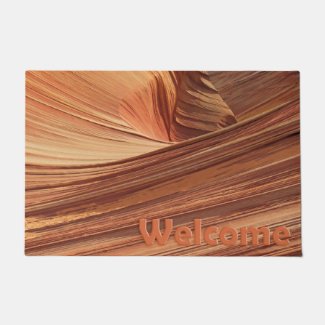

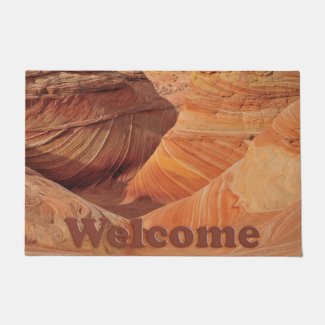
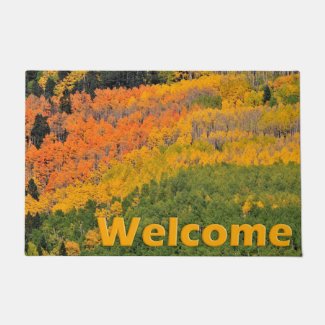
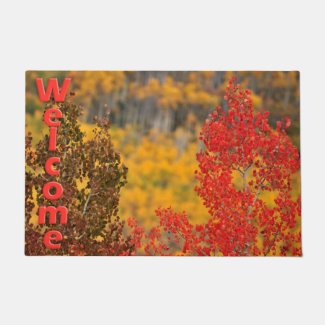
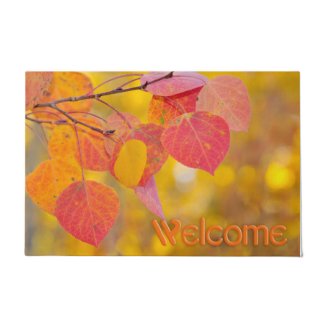
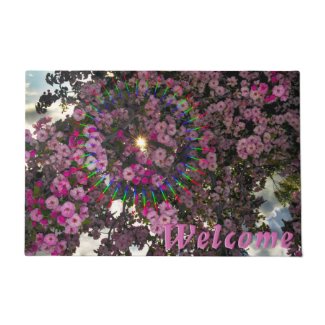
Ton of work sure goes into that one. lol how wearing close to the same thing made all think sisters
ReplyDeleteYes, Pat, it was a ton of work, but fun, too. I'm so happy with the way it turned out!
DeleteWow lovely afghans and cute photo of you too. Your mountain scene is spectacular!
ReplyDeleteThank you, Karen! I have a particular fondness for our mountains...
DeleteOh my word. This is a post to come back to and read several times. Thanks for an awesome tutorial! I would have engineered the block from the outside in, just as you did - makes more sense and I should think produces a neater square.
ReplyDeleteThat last photo is simply stunning. You have made a beautiful thing. Your afghan reminds me of leaves floating through a rainbow, gently blending the colours as they go....
Thank you, Sue! You've made me feel on top of the world!
DeleteWow! Your afghan is beautiful. I have only crocheted three very simple ones, and they took forever. Your work just blows me away. ;)
ReplyDelete